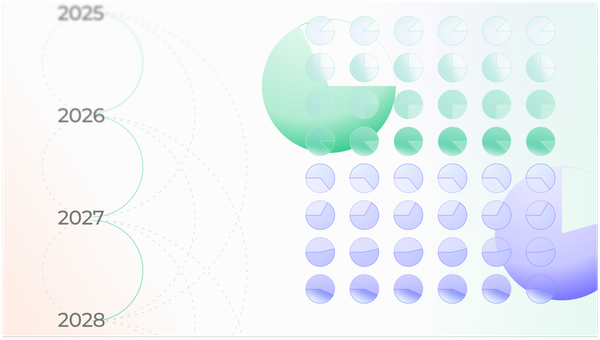Different apps cater to diverse home buyers' needs and search styles with unique features.
Searching for a dream home has become incredibly convenient in today's digital age. Prospective homebuyers and renters now have a plethora of real estate app options at their fingertips. A growing number of Americans, even those not actively in the market for a new home, are finding themselves captivated by real estate apps, using virtual house hunting as a form of escapism.
Kenzie Bryant, a New York resident and author of a Vanity Fair story about why people are turning to real estate apps over social media pointed out:
"I also spend more time on Zillow’s app than on Twitter and Instagram combined, browsing homes for sale across the country, because it’s reliably soothing, especially when those other sites are not."
—Kenzie Bryant, Journalist
The real estate industry has evolved into a battleground where brands like Zillow, Realtor.com, Redfin, and Trulia contend for dominance. These platforms have transcended their original use, taking user centered design to a new level by adding user experience features that transform them into realms of leisure and imaginative exploration. Although we see that users often adopt a multi-app approach to gather comprehensive information, distinct preferences and brand loyalties emerge.
In our UX research on real estate apps, we delve into the factors that influence user preferences for specific apps, drawing insights from surveys and videos of their user experiences. We also explore the implications for app developers, product managers, and UX researchers.
Usage Trends: Zillow and Realtor.com Lead in Preference and Satisfaction
To determine users' preferred real estate app, we asked participants to revisit their favorite apps and replicate their typical search patterns. We analyzed video recordings of their interactions and surveyed them on their app preferences.
Zillow emerged as the frontrunner among our users, with 37% of users preferring it as their primary real estate app, followed by Realtor.com at 30%.
“It's super user friendly, I've used it multiple times and I love how my searches are saved and the more I use it, the more targeted the listings are towards myself and what I'm looking for.”
—Clara, Gen Z, Illinois
Demographic nuances emerged, with Redfin favored by men (30%) over women (13%), while Realtor.com resonated more with women (31%) than men (27%). Generational preferences were also evident, with Gen Z individuals leaning strongly towards Zillow (50%), while Realtor.com held greater appeal for Gen X (33%).
In terms of user experience satisfaction, Zillow and Realtor.com remained at the forefront, garnering 66% and 59% approval ratings, respectively. Trulia, despite its niche appeal, managed to secure 60% satisfaction, demonstrating its ability to provide valuable information and a comparable experience to its competitors.
Deconstructing the Appeal of Different Real Estate Apps
Zillow
Zillow reigns supreme as the real estate app of choice for many users. It has established a loyal user base, with many individuals relying on it for years, finding comfort and familiarity in its interface. The app's commitment to user centered design, evident in recent upgrades, has further cemented its appeal.
“Because it's the most feature-rich app that offers the filters and the search functionality that I'm looking for as well as that it's wrapped up in the beautiful interface.”
—Eddie, Gen Z, New York
Zillow's popularity is built on its ability to deliver personalized search results, saving preferences, and provides timely alerts on new listings and home sales. Users commend its professional appearance, sophisticated design, and the breadth of information it offers, including neighborhood ratings, school details, and commute times.
“It is so easy to filter.”
A Zillow user speaks about how easy the user interface of the app is.
—Sharon, Gen X, Indiana
Realtor.com
Realtor.com has established itself as a preferred real estate app for many users, and its popularity stems from several key factors. Many appreciate the comprehensive data Realtor.com offers about neighborhoods and the surrounding environment, including unique features like noise level maps.
"Realtor.com gave the most information. It's very similarly laid out as Zillow, but I think realtor.com explains further about the neighborhood and surroundings."
—Marissa, Millennial, Florida
Users also highlight Realtor.com's extensive listings, which surpass those of other platforms. The clear presentation of sale prices for various properties and the emphasis on detailed information, particularly regarding potential threats like floods and wildfires, add value for homebuyers.
“This particular application gave detailed information regarding the environment that I would live in, and also the potential threats such as flood and wildfires. I found this to be valuable information as part of the decision-making process to purchase a home.”
—William, Gen X, Florida
“There is a lot of information!”
A Realtor user notes that the app has detailed neighborhood and environment information.
—Jesse, Millenial, Tennessee
Redfin
Redfin, although trailing behind other apps in terms of user satisfaction, does offer some features users appreciate, like a user-friendly interface, well-organized settings, and a balanced presentation of information.
"After comparing Zillow, Trulia, and Redfin, I found Redfin to be a better experience with easily accessible data and more information regarding tax and pricing history."
—Gary, Gen X, Arizona
Users who were satisfied with Redfin liked the app's ease of navigation, comprehensive neighborhood information, and valuable additional insights compared to other platforms. Redfin's streamlined appearance, map/list-friendly features, and additional perks for buying/selling further enhance its appeal.
“It tells me how much my house has appreciated.”
A Redfin user likes getting information on price trends.
—Stephanie, Gen Z, California
Trulia
Trulia has emerged as a contender among newer platforms in the real estate space. Users appreciate Trulia's ability to provide details on people and amenities not commonly found on other platforms. A standout feature of Trulia is its demographic neighborhood information, which provides users with valuable insights into the characteristics of the surrounding area, including age distribution, family composition, and education levels. Here are what a few users have to say about Trulia.
"Trulia was nice to look at, easy to use, and gave me all the information I asked for and more."
—Zharia, Millennial, California
“Trulia was actually better organized and laid out, as well as giving you additional information about where you might live and what kind of things you'll have access to, as well as your community.”
—Tanya, Gen X, New Mexico
“The age and education information is a nice added touch.”
A Trulia user finds the information breakdown provided to be very useful.
—Poly, Millennial, Texas
Others
Others played a supporting role, with people often using a combination of real estate apps. Apartments.com, Homesnap, Padmapper, Opendoor, and others were frequently used alongside the primary apps. Based on user feedback, this multifaceted approach was driven by various factors: some apps offered more comprehensive local listings, others provided a more holistic understanding of specific neighborhoods, and others featured unique filtering mechanisms that made searches easier.
Implications for App Owners
In the dynamic space of real estate technology, user centered design reigns supreme. App owners should seek inspiration from the industry's leaders: Zillow's universal appeal, Realtor.com's deep neighborhood insights, Redfin's streamlined experience, and Trulia's unconventional approach.
Even if you're not building real estate apps, here are three key takeaways from these findings, especially if you're competing in a crowded space:
- Watch your competition: Know what your competitors are doing to understand what the table stakes are, and what might constitute a shift in user behavior. Competitive research can help you see what user experience features others are building, how users are engaging with them, and help you learn from that experience.
- Understand how you are already standing out to users: UX research can help you understand what is already working well, so you can lean into user centered designs that are already driving engagement.
- Watch your edge cases: Sometimes an edge case is just that, but they can often be early indicators of shifts in user behavior. Longitudinal research, with multiple touch points over weeks or months, can help you learn whether unusual activity is just a blip or a new trend.
Pulse Labs tools support a variety of research approaches, including competitive benchmarking, UX research, longitudinal research and our new solution designed specifically for optimizing app UX called FlightRecorder™.
Want to learn more about the tools we use for our research and how they can help you power your product design and user experience?
Stay tuned for more insights from Pulse Labs IQ™ and sign up for our newsletter.








Member discussion